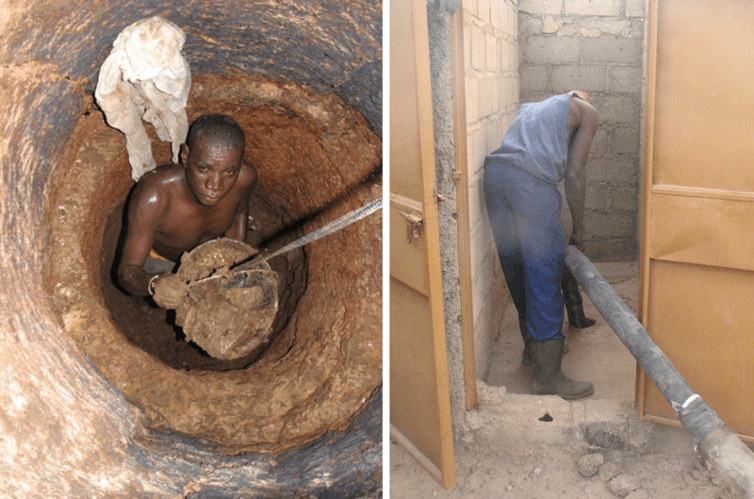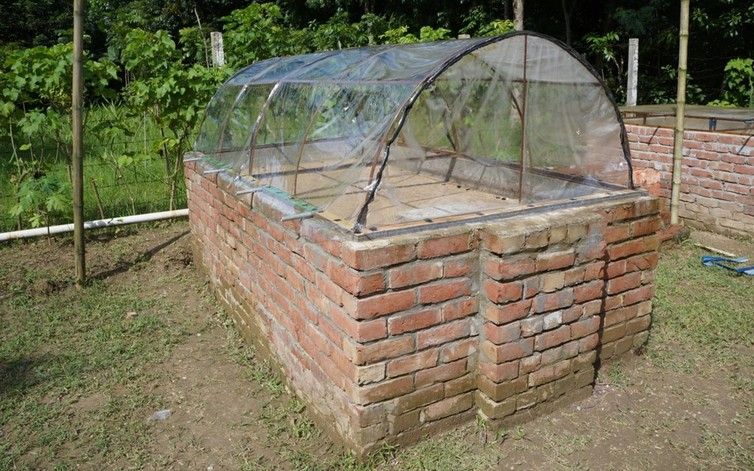How Fake, Lab-Made Poop Can Improve Sanitation
The, er, sludge replicates the properties of human waste to better understand sanitation in Bangladesh
/https://tf-cmsv2-smithsonianmag-media.s3.amazonaws.com/filer/02/f2/02f2ee9a-bc5d-415f-8905-df8b538b582b/gx7cfzsd-1499762801.jpg)
Across the world, almost three billion people do not have the luxury of a flushing toilet. Instead they rely on static sanitation systems, like pit latrines to deal with their waste. As these are not often connected to a sewer, they require manual emptying and disposal.
Poor understanding of the risks involved means that untreated sludge is often thrown into nearby fields and rivers. The impact of this can be devastating. Germs found in fecal sludge cause illnesses such as diarrhea which results in the deaths of more than 750,000 children under five every year.
Yet is is estimated that every dollar invested in better sanitation returns up to US$5.50 in social and economic benefits. These come through increased productivity, reduced healthcare costs and prevention of illness and early death.
A crucial part of improving sanitation lies in researching and developing simpler, more efficient ways of treating sludge in places where a sewerage and centralized waste water treatment is not available.
My research is part of a partnership with the engineering firm Buro Happold (BH) who were asked by WaterAid Bangladesh to find a sludge treatment technology which was effective, practical and affordable.
After considering options which included biogas and pit additives – products used to try and reduce sludge volume – the company opted for unplanted drying beds. They are simple in design and make use of the reasonable amount of sunshine in Bangladesh.

Drying beds dry out the sludge through the processes of evaporation and drainage. As it loses water, the temperature within the sludge rises, killing off some of the germs it contains. Once dried to a suitable consistency for removal, the sludge is composted to allow safe use in agriculture as a soil conditioner.
My research aims to better understand the sludge drying process in these beds in order to estimate the time necessary before it is safe to remove, preventing untreated sludge being emptied into the environment.
Poo factory
To do this, it’s necessary to make sludge in the laboratory, which replicates the chemical and physical properties of the real stuff as closely as possible. By doing so we can perform safe, reproducible drying tests to ascertain how real sludge will dry in a tropical climate.

Aside from being full of germs, fecal sludge is highly variable in terms of its chemical and physical composition. One study investigating the “output” of a group of healthy similarly aged men on a controlled diet for three weeks found noticeable differences in the chemical composition of their poo. Such variation is further amplified between different countries, climates and diets.
The main chemical components of poo are fats, carbohydrates (fiber), nitrogenous material, minerals (mainly potassium, calcium and phosphorous) and microorganisms. In 2006 scientists developed a simulant for human poo to test the design of a waste collection system for a crew exploration vehicle for NASA.
Using the known chemical composition, the NASA researchers developed a “recipe” that consisted of cellulose to represent the carbohydrates, yeast for the microorganisms, peanut oil for fats and carbohydrates, plus potassium chloride, calcium phosphate and water.
Unfortunately the sludge that is dried on the drying beds in Bangladesh is slightly different to fresh poo, as it has spent time either in a pit or a septic tank. This means that easily degradable components in fresh poo (carbohydrates, proteins and sugars) are broken down, leaving behind more stable ones. NASA’s recipe for fresh poo needed to be altered for our experiments to account for the changes and to better represent the characteristics of real fecal sludge.
As part of the Bill and Melinda Gates Foundation’s Reinvent the Toilet Challenge in 2014, the Pollution Research Group in South Africa altered the NASA recipe. They included the dietary supplement psyllium husk and miso paste for fiber, removed potassium chloride, added polyethylene glycol to aid water retention, active yeast to represent bacteria and changed cellulose to cotton linters and shredded tissue.
We further altered this recipe to replace cotton linters with hemp as it was more readily available. Active yeast was replaced with brewer’s yeast as it is easier to purchase in bulk.
Now that we have a suitable simulant for fecal sludge we are able to conduct tests on drying beds to better predict the drying behaviour of the sludge in a tropical climate. This could lead to the use of such beds on a much larger scale, meaning that instead of being left dangerously untreated, the poo has somewhere better to go.
This article was originally published on The Conversation.
Naomi Deering, Postgraduate Researcher in Sanitation, University of Bath